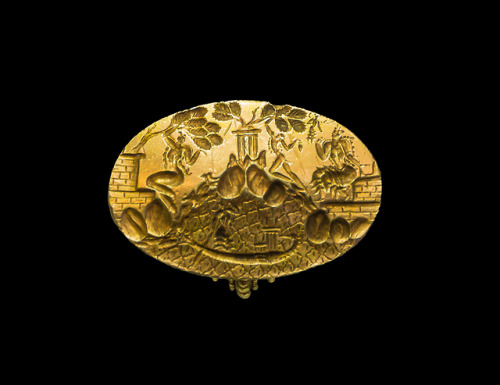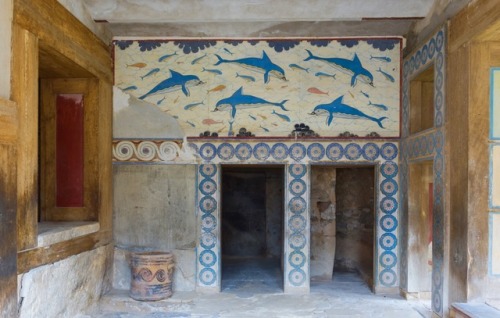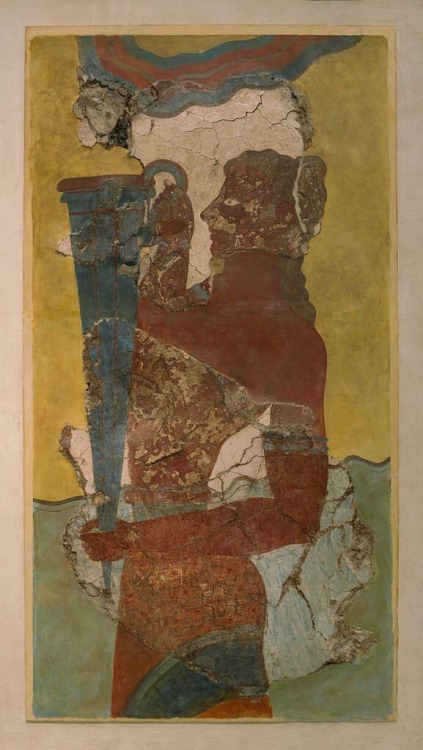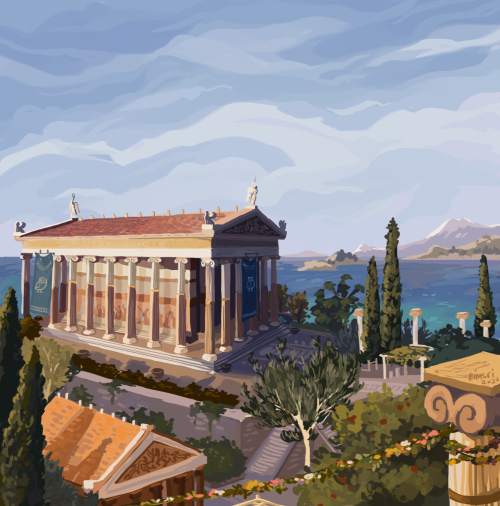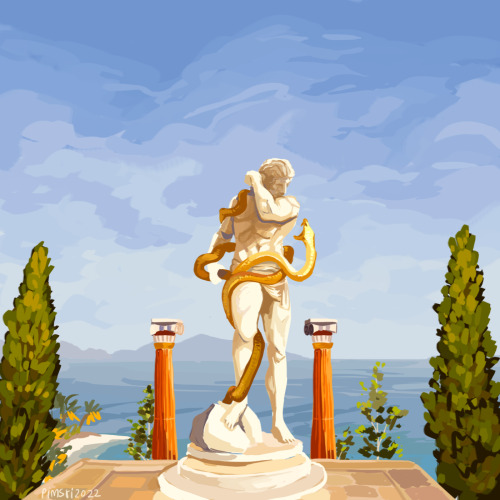#knossos
The ‘Ring of Minos’ from Knossos - depicts a goddess descending to earth and into a rowing boat with representations of tree worship.
Minoan, Bronze Age
Post link
The Palace of Knossos is the most important of the Minoan palaces in Crete (Greece). It was built around 2000 BC and destroyed by an earthquake before 1700 BC. Its surface is about 17,000 m² built and had more than 1,500 rooms.
Post link
King Minos and The Labyrinth, silver coin from Knossos, 200 BC.
In Greek mythology, the Labyrinth (probably derived from the Lydian word labrys ) was an elaborate structure designed and built by the legendary artificer Daedalus for King Minos of Crete at Knossos. Its function was to hold the Minotaur, a mythical creature that was half man and half bull and was eventually killed by the Athenian hero Theseus. Daedalus had so cunningly made the Labyrinth that he could barely escape it after he built it. Theseus was aided by Ariadne, who provided him with a skein of thread, so he could find his way out again.
Post link
The “Cup bearer”, fresco from Knossos.
2000 BC.
Archaeological Museum of Heraklion, Crete, Greece.
Post link

(**i drew this map and wrote this text for my upcoming book on greek hero myths. If you see any problems please let me know! Xoxo)
Certainly the ancient Greek myths were influenced and inspired by even older cultures like Egypt and Babylon (see Zeus parallels with Babylonian “Anu”) through “diffusion” (cultural spreading). But there were three powerful civilizations in ancient Greece which fostered a unique cultural and mythic heritage, spanning almost 3000 years.
MINOA: (3000 B.C.-1100 B.C.) In the Bronze age, on the southern island of Crete, rose a great civilization with a population of over 10,000 at the city of Knossos. The name derives from King Minos, of the Theseus and Minotaur myth. The Minoans were known for far-reaching Mediterranean sea trade, and wrote in a language called “Linear A,” which has never been deciphered.
MYCENAE: (1700 B.C.- 1100 B.C.) Another sea faring Bronze age civilization in which the Homeric characters hail from. With the Minoan civilization in decline around 1450 B.C., the Myceneans took over the islands and adopted much of the Minoan culture, developing a new writing system, “linear B,” which became the earliest Greek language. Whether due to invading foreigners or natural disasters, the decline of Mycenae was followed hundreds of years of decline; the “dark ages.”
“Archaic” period (700-480 B.C.) Populations increased, and progressive concepts appeared, such as the creation and organization of the “Polis” or city-state.
ATHENS (480 B.C.- 323 B.C.) the word “Greece” was a later term created by the Romans. The ancient Athenian Greeks called their country “Hellas” and the people were “Hellenes.” the “Classical age” of Athens was a period of revolutionary development in philosophy; (Socrates, Plato, Aristotle,) theatre drama (Aeschylus, Sophocles, Euripides), refining concepts of democracy, among many other innovations in sculpture, architecture, and medicine.
The organization in charge of an ambitious plan to overhaul the Greek capital’s image as an archaeological destination has offered its expertise to help promote the archaeological site of Knossos on Crete.
The Unification of the Archaeological Sites of Athens said on Friday that it will be coordinating an international competition for zoning proposals on how best to open up the entire site of the Bronze Age center of the Minoan civilization to visitors, who are currently restricted mainly to the palace complex and are unable to see other antiquities on the site.
“The archaeological site of Knossos is the second most visited site in Greece” with an average of 1 million visitors a year, said UASA president Dora Galani. “It is extremely rich in findings and is spread over a large expanse, characteristics that have not been fully maximized as tourists only visit the palace complex. At a short distance from the palace though, there are a lot of interesting monuments, which most people are ignorant of.” Read more.

